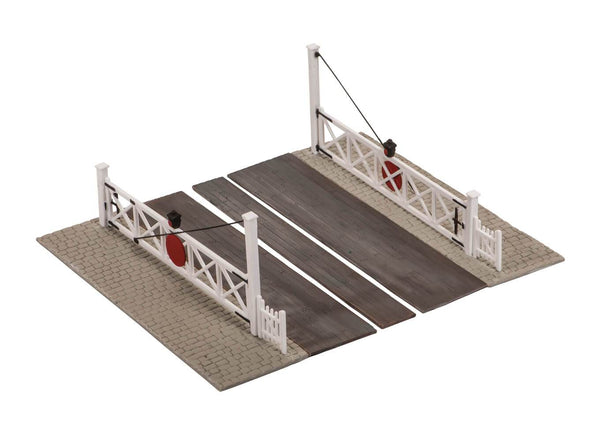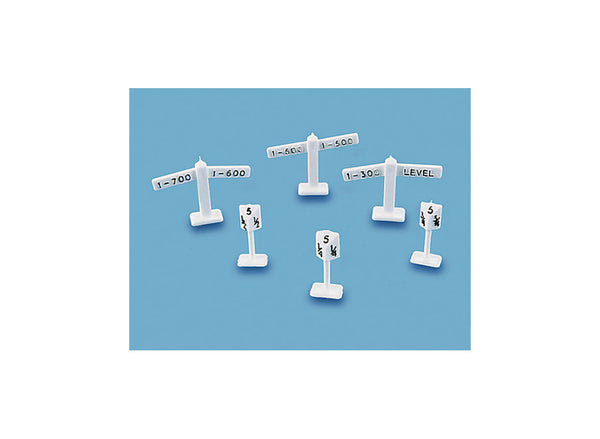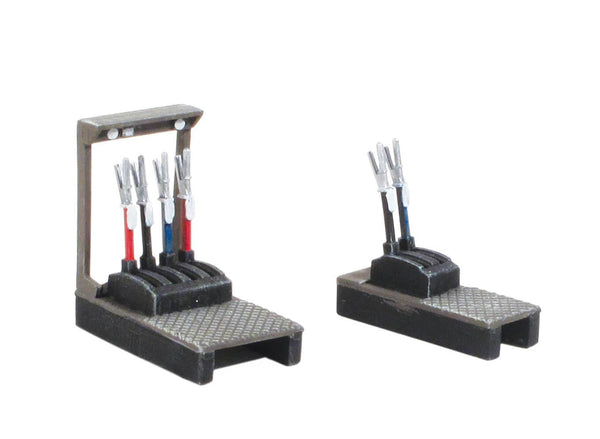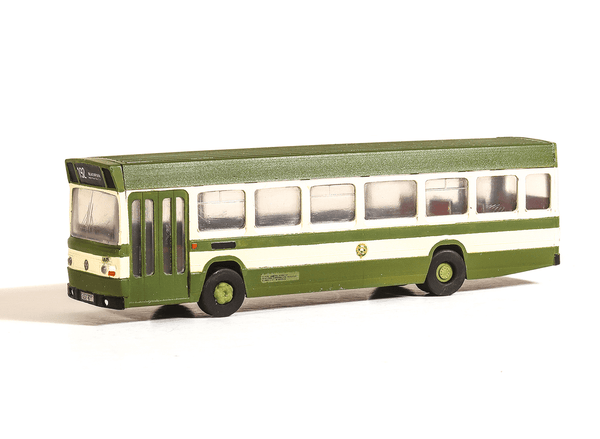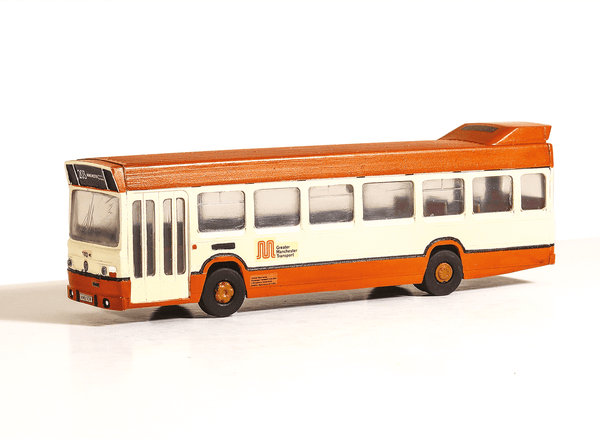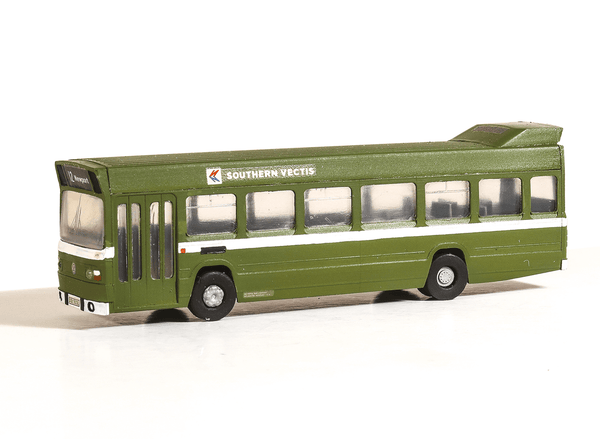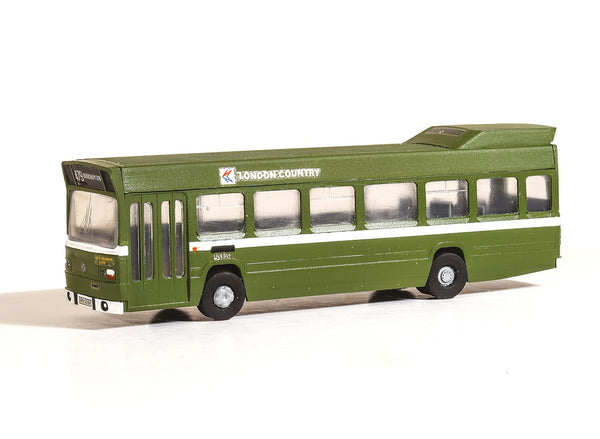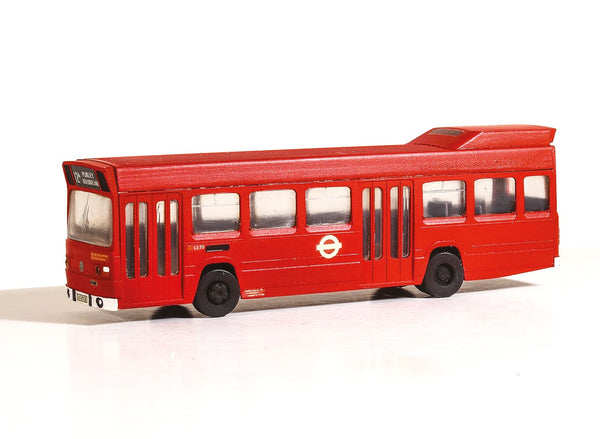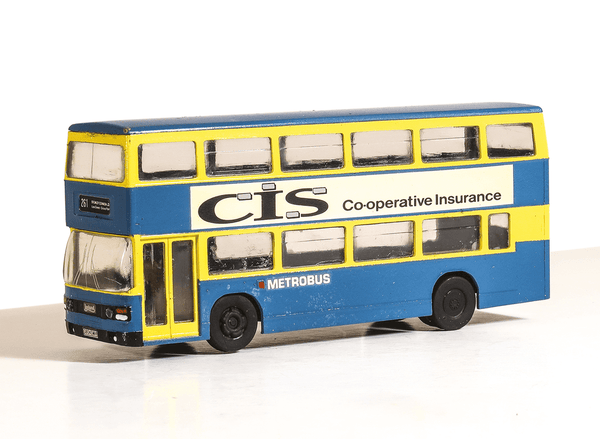BROWSE PECO PRODUCTS
Browse through our complete product portfolio.
1059 Products Found
Level Crossing Gates
This single track crossing features one of the many different types of gates used where roads had to cross the railway on the level. Kit includes 1 pair of gates 95mm x 17mm, plastic cobblestone roadway and a planked crossing deck.Don't forget the crossing keepers box (SS29), Signal Box (SS48), or Cottage (SS39). Supplied with pre-coloured parts although painting and/or weathering can add realism; glue is required to complete this model.
Level Crossing, 2nd Radius
The Setrack Level Crossings can be positioned virtually anywhere on your layout. There are four radii available in curved crossings, plus the straight crossing and add on unit . These simply clip together so that you can cross up to four tracks on a curve and any number of tracks on the straight. They are supplied with traditional gates as standard, LK-51 modern barriers can be substituted if required.
PECO Setrack 00 Gauge Code 100 - Unit trackage System is a high quality rigid unit trackage system suitable for all popular brands of 00 gauge model trains.
Being fully compatible with the Code 100 PECO Streamline range, it need never be discarded as your layout develops.
The solid nickel silver rails are integrally moulded into the sleeper bases for maximum realism and strength. Turnouts are fitted with an over-centre spring for immediate use, no extra levers necessary.
Lever Ground Frames
A kit depicting the levers necessary to control isolated industrial and country sidings; contains 2 frames as illustrated. Don't forget the point rodding (SS89 and 90); catch points, ground signals/signals and loading gauges where appropriate. Supplied with pre-coloured parts although painting and/or weathering can add realism; glue is required to complete this model.
Leyland National Single Decker Bus, Blackpool
The Leyland National bus was built in Workington, Cumbria, between 1972 and 1985, this project being a collaboration between British Leyland and the National Bus Company. It was a successful venture, with thousands built, and also exported to many countries around the world, including Australia, the Netherlands, Jamaica, Trinidad & Tobago, and the largest export shipment, 450 buses to Venezuela! Very few remain in service in the UK, but over 100 are preserved. Another interesting fact, and a railway one, is that the bus body design, and components, were adapted to be used in the British Rail Class 141, 142 and 155 diesel multiple units. Kit contains pre-coloured parts and transfers; requires glue and detail painting to complete.
Leyland National Single Decker Bus, Greater Manchester
The Leyland National bus was built in Workington, Cumbria, between 1972 and 1985, this project being a collaboration between British Leyland and the National Bus Company. It was a successful venture, with thousands built, and also exported to many countries around the world, including Australia, the Netherlands, Jamaica, Trinidad & Tobago, and the largest export shipment, 450 buses to Venezuela! Very few remain in service in the UK, but over 100 are preserved. Another interesting fact, and a railway one, is that the bus body design, and components, were adapted to be used in the British Rail Class 141, 142 and 155 diesel multiple units. Kit contains pre-coloured parts and transfers; requires glue and detail painting to complete.
Leyland National Single Decker Bus, Green Vari-kit
The Leyland National bus was built in Workington, Cumbria, between 1972 and 1985, this project being a collaboration between British Leyland and the National Bus Company. It was a successful venture, with thousands built, and also exported to many countries around the world, including Australia, the Netherlands, Jamaica, Trinidad & Tobago, and the largest export shipment, 450 buses to Venezuela! Very few remain in service in the UK, but over 100 are preserved. Another interesting fact, and a railway one, is that the bus body design, and components, were adapted to be used in the British Rail Class 141, 142 and 155 diesel multiple units. Kit contains pre-coloured parts and transfers; requires glue and detail painting to complete.
Leyland National Single Decker Bus, London Country
The Leyland National bus was built in Workington, Cumbria, between 1972 and 1985, this project being a collaboration between British Leyland and the National Bus Company. It was a successful venture, with thousands built, and also exported to many countries around the world, including Australia, the Netherlands, Jamaica, Trinidad & Tobago, and the largest export shipment, 450 buses to Venezuela! Very few remain in service in the UK, but over 100 are preserved. Another interesting fact, and a railway one, is that the bus body design, and components, were adapted to be used in the British Rail Class 141, 142 and 155 diesel multiple units. Kit contains pre-coloured parts and transfers; requires glue and detail painting to complete.
Leyland National Single Decker Bus, London Transport
The Leyland National bus was built in Workington, Cumbria, between 1972 and 1985, this project being a collaboration between British Leyland and the National Bus Company. It was a successful venture, with thousands built, and also exported to many countries around the world, including Australia, the Netherlands, Jamaica, Trinidad & Tobago, and the largest export shipment, 450 buses to Venezuela! Very few remain in service in the UK, but over 100 are preserved. Another interesting fact, and a railway one, is that the bus body design, and components, were adapted to be used in the British Rail Class 141, 142 and 155 diesel multiple units. Kit contains pre-coloured parts and transfers; requires glue and detail painting to complete.
Leyland National Single Decker Bus, Red Vari-kit
The Leyland National bus was built in Workington, Cumbria, between 1972 and 1985, this project being a collaboration between British Leyland and the National Bus Company. It was a successful venture, with thousands built, and also exported to many countries around the world, including Australia, the Netherlands, Jamaica, Trinidad & Tobago, and the largest export shipment, 450 buses to Venezuela! Very few remain in service in the UK, but over 100 are preserved. Another interesting fact, and a railway one, is that the bus body design, and components, were adapted to be used in the British Rail Class 141, 142 and 155 diesel multiple units. Kit contains pre-coloured parts and transfers; requires glue and detail painting to complete.
Leyland Olympian Double Decker Bus, Blackpool Corporation
The Leyland Olympian entered service with the National Bus Company (N.B.C.) in 1981, as a replacement for the Bristol VRT. Shortly after this, Olympians entered service with many provincial operators. London Transport ordered its' first batch in 1984.
Initial batches of the Olympian featured a Leyland chassis, powered by a Gardner 6 LXB engine with an Eastern Carriage Works (E.C.W.) body. Later batches used a Leyland built body and those produced more recently had an Optare built body. Outwardly these three bodies are basically identical and this kit is based on this type of Olympian.
They were exported to Greece, Hong Kong, the USA, Canada and Singapore. Kit contains pre-coloured parts and transfers; requires glue and detail painting to complete.
Leyland Olympian Double Decker Bus, London Buses Metro
The Leyland Olympian entered service with the National Bus Company (N.B.C.) in 1981, as a replacement for the Bristol VRT. Shortly after this, Olympians entered service with many provincial operators. London Transport ordered its' first batch in 1984.
Initial batches of the Olympian featured a Leyland chassis, powered by a Gardner 6 LXB engine with an Eastern Carriage Works (E.C.W.) body. Later batches used a Leyland built body and those produced more recently had an Optare built body. Outwardly these three bodies are basically identical and this kit is based on this type of Olympian.
They were exported to Greece, Hong Kong, the USA, Canada and Singapore. Kit contains pre-coloured parts and transfers; requires glue and detail painting to complete.










